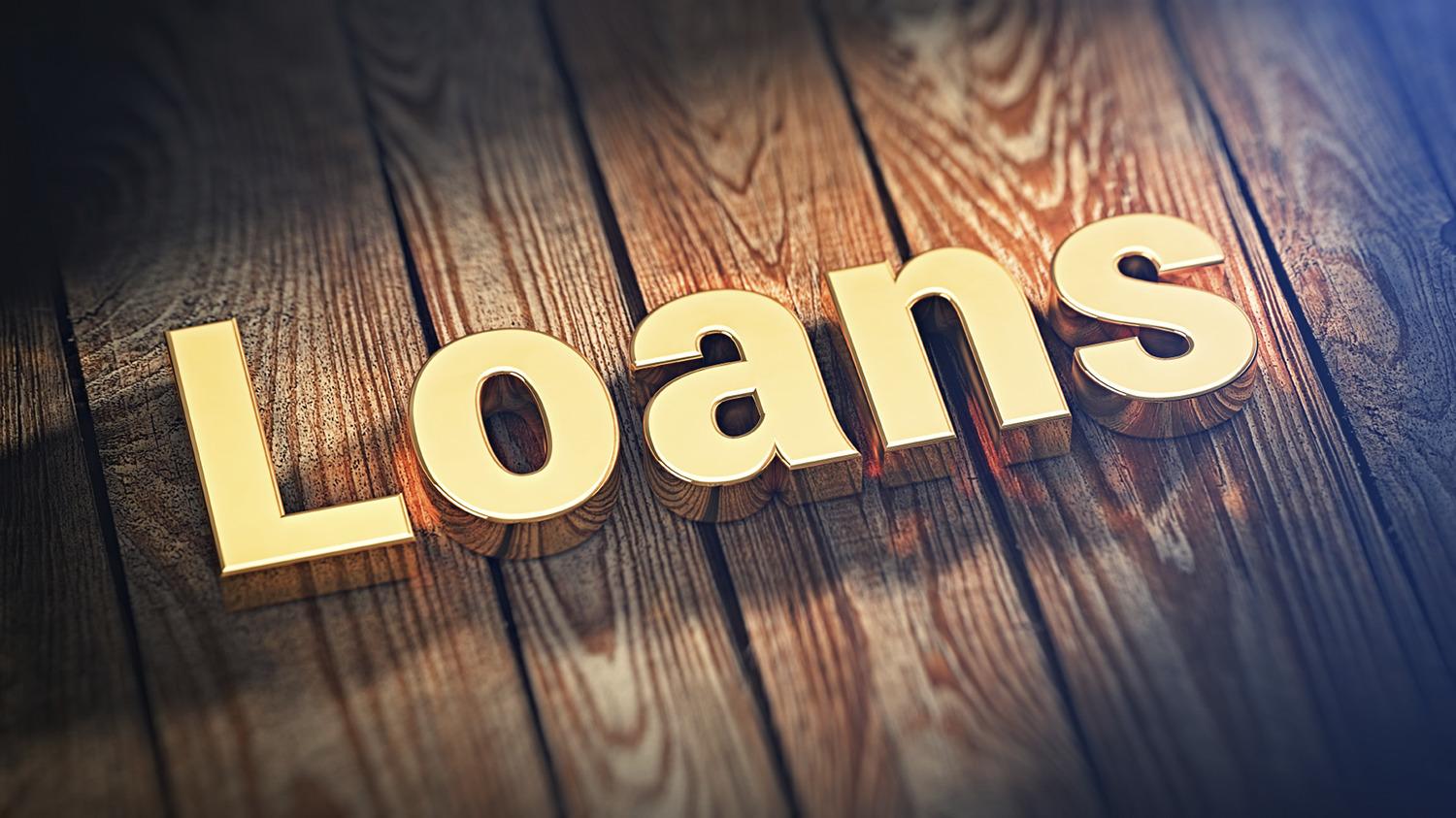Last Updated on July 1, 2024 by admin
A loan is a financial arrangement where an individual or organization borrows a sum of money from a lender with the agreement to repay it over time. It is commonly used to finance various personal and business needs, such as purchasing a home, funding education, expanding a business, or covering unexpected expenses. Loans come in different types to cater to specific requirements.
The most common types include personal loans, mortgages, auto loans, student loans, and business loans. Each type has its own terms and conditions regarding repayment schedules, interest rates, and eligibility criteria. One advantage of taking out a loan is that it provides immediate access to funds that might otherwise be unavailable. Loans also allow individuals or businesses to make large purchases or investments without having to deplete their savings entirely.
Additionally, repaying the loan on time can help build creditworthiness and improve one’s credit score. However, loans also have disadvantages. Borrowers must repay the principal amount along with interest accrued over time. This means that borrowers end up paying more than they initially borrowed due to interest charges. Failure to make timely payments can lead to penalties and damage one’s credit history.
Also read: What is SME loan and Guide to SME loan
loan can be view as is a form of debt incurred by an individual or other entity lent to another party in exchange for future repayment of the value or principal amount, the lender also adds interest and/or finance charges to the principal value which the borrower must repay in addition to the principal balance.
Types of Loan
A loan can be Secured and Unsecured Loan
Secured loan: These kind of loans require the borrower to pledge collateral for the money being borrowed. In case the borrower is unable to repay the loan and the lender reserves the right to utilize the pledged collateral to recover the pending payment
Unsecured loan: Borrower do not require any collateral for loan disbursement the lender doesn’t have the right to take anything return,Though credit score, and other factors are use to determine loan amount
Various kind of Loan borrower can get
Loans serve as a financial lifeline for individuals and businesses alike, providing access to funds when needed. However, not all loans are created equal, and understanding the various types available is crucial before making any borrowing decisions.
1. Personal loan : A personal loan is a type of loan that individuals can borrow from a bank, credit union, or online lender to meet various personal financial needs. Unlike specific-purpose loans like auto loans or mortgages, personal loans are typically unsecured, meaning they do not require collateral.
Personal loans can be used for a variety of purposes, such as debt consolidation, home improvements, medical expenses, weddings, vacations, or any other personal expenses. The borrower receives a lump sum of money from the lender and agrees to repay the loan over a fixed period of time with regular installments.
The terms and conditions of personal loans can vary depending on the lender and the borrower’s creditworthiness. Factors such as credit score, income, and employment history are often considered during the loan approval process. Interest rates for personal loans can also vary based on these factors, with borrowers with better credit generally receiving lower interest rates.
Repayment terms for personal loans are typically fixed, meaning the borrower will make equal monthly payments over the specified loan term until the loan is fully paid off. Personal loans may have terms ranging from a few months to several years, depending on the loan amount and the borrower’s preference.
It is important to carefully consider the terms, interest rates, and fees associated with a personal loan before committing to one. Borrowers should assess their ability to repay the loan and compare multiple lenders to ensure they are getting the best loan terms that suit their financial situation.
2. Cash advance loan
A cash advance loan, also known as a payday loan or paycheck advance, is a short-term loan typically provided by a lender or a financial institution. This type of loan is designed to provide borrowers with immediate access to cash to cover unexpected expenses or bridge financial gaps until their next paycheck.
Cash advance loans are usually for small amounts, typically ranging from $100 to $1,500, and are intended to be repaid within a short period, often on the borrower’s next payday. The loan is repaid in full, including the principal amount borrowed and any associated fees or interest charges.
Unlike traditional loans, cash advance loans often have less stringent credit requirements and a simplified application process. Borrowers typically need to provide proof of income, personal identification, and a post-dated check or authorization to debit their bank account on the due date.
However, cash advance loans come with higher interest rates and fees compared to other types of loans. As a result, they can be an expensive form of borrowing. It is important for borrowers to carefully consider their financial situation and explore alternative options before taking out a cash advance loan to ensure they can manage the repayment terms and avoid falling into a cycle of debt.
3. Student loan
A student loan is a form of financial aid specifically designed to help students pay for their education expenses, including tuition fees, books, supplies, and living expenses. These loans are typically offered by government entities, such as the federal government, or by private financial institutions.
Student loans can be either federal or private. Federal student loans are provided by the U.S. Department of Education and offer various benefits, such as fixed interest rates, flexible repayment options, and potential loan forgiveness programs. Private student loans, on the other hand, are offered by banks, credit unions, or other private lenders and their terms and conditions may vary significantly.
When a student takes out a loan, they are required to repay the borrowed amount, along with any accrued interest, after a certain period of time. However, repayment on federal student loans typically begins after the student graduates, leaves school, or drops below half-time enrollment, whereas private student loans may require repayment to start immediately or have flexible repayment options.
It is important for students to carefully consider the terms and conditions of student loans, including interest rates, repayment plans, and potential loan forgiveness options, before borrowing. It is advisable to explore scholarships, grants, and other forms of financial aid before relying solely on student loans to fund education expenses.
3. Mortgage loan
A mortgage loan, commonly referred to as a mortgage, is a type of loan used to finance the purchase of real estate, typically a home or property. It is one of the most significant financial commitments that individuals undertake during their lifetime.
To obtain a mortgage loan, the borrower (also known as the mortgagor) enters into an agreement with a lender (typically a bank or a financial institution). The lender provides a specific amount of money to the borrower to purchase the property, and in return, the borrower provides the property as collateral for the loan.
Mortgage loans typically have a long repayment period, often ranging from 15 to 30 years. During this time, the borrower makes regular monthly payments that include both the principal (the amount borrowed) and interest. The interest rate on a mortgage loan can be fixed, meaning it remains the same throughout the loan term, or adjustable, where the interest rate may change over time based on market conditions.
There are various types of mortgage loans available, including conventional mortgages (not insured by a government agency), government-backed loans (such as FHA loans and VA loans), and specialized loans for specific purposes or borrowers (such as jumbo loans or programs for first-time homebuyers).
Defaulting on a mortgage loan can result in foreclosure, where the lender takes possession of the property to recover their investment. Therefore, it is essential for borrowers to carefully assess their financial situation, consider their ability to repay the loan, and understand the terms and conditions of the mortgage before committing to it.
4. Home equity loans and lines of credits
Home equity loans and lines of credit (HELOCs) are both types of loans that allow homeowners to tap into the equity they have built up in their homes. Here’s how they differ:
A home equity loan is a lump sum loan where the borrower receives a fixed amount of money upfront, typically based on a percentage of the home’s appraised value minus any outstanding mortgage balance. It is a second mortgage, meaning it is in addition to the primary mortgage on the home.
5. Small business loan
A small business loan is a type of loan specifically designed to help entrepreneurs and small business owners finance their business operations, expansion, or other financial needs. These loans can provide a source of capital for starting a new business, purchasing equipment, hiring employees, managing cash flow, or investing in marketing and advertising, among other business-related expenses.
Small business loans are offered by various lenders, including banks, credit unions, online lenders, and government entities. The terms and eligibility requirements can differ depending on the lender
Others kind of loans are:
6. working capital loans – for short notice or emergency situations
7. fixed asset loans – for buying assets where the asset itself is collateral
8. factoring loans – loans based on money owed to your business by customers
9. hire purchase loans – for long-term purchase of assets such as vehicles or machinery
Advantages of loan and disadvantage of a loan
Loans serve as a financial tool that can be advantageous in certain situations, but they also come with their fair share of disadvantages. Understanding both sides is crucial before deciding to take on any form of debt. Here, we delve into the advantages and disadvantages of loans to help you make an informed decision. Advantages:
Advantage of a loan
There are many benefits of taking out a loan over other forms of credit, Loans can be valuable in helping you achieve your financial goals. Whether you’re looking to consolidate existing debts into one payment as part of a debt reduction plan, or are borrowing to facilitate a life-changing decision like home improvements or a wedding.
Loans are generally most suitable for the following:
1. paying for assets – vehicles and computers
2. start-up capital
3. instances where the amount of money you need is not going to change
4. Purchase without liquidity
5. Driver of growth
6. Provides capital for operation
7. Better interest rate
8. Flexibility
9. Account and tax advantage
10. Ownership remains with borrowers
11. Cash discount
Read: Different Between Personal Loan and Line of credit
Disadvantages of loan
1. Addition of money on cost
2. Security needs and creditworthiness
3 . Strict payment penalties and charges
4. . Interest rates risk (cost of funds).
5. Processing fee
6 . Larger loans will have certain terms and conditions
7 . Loans are not very flexible – you could be paying interest on funds you’re not using.
8 . You could have trouble making monthly repayments if your customers don’t pay you
promptly, causing cash flow problem.
Primary features of loan
Understanding loan term is vital such as principal, interest, term and payment amount.
1. Principal: This is the amount of money you borrow from a lender
2. Interest: The interest rate is the cost of a loan — how much you have to pay back in addition to the principal.
3. Installment payments: Loans are usually repaid at a regular cadence
4. Term: The loan term is how much time you have to repay the loan in full. Depending on the type of loan, the term can range from a few months to several years.
















